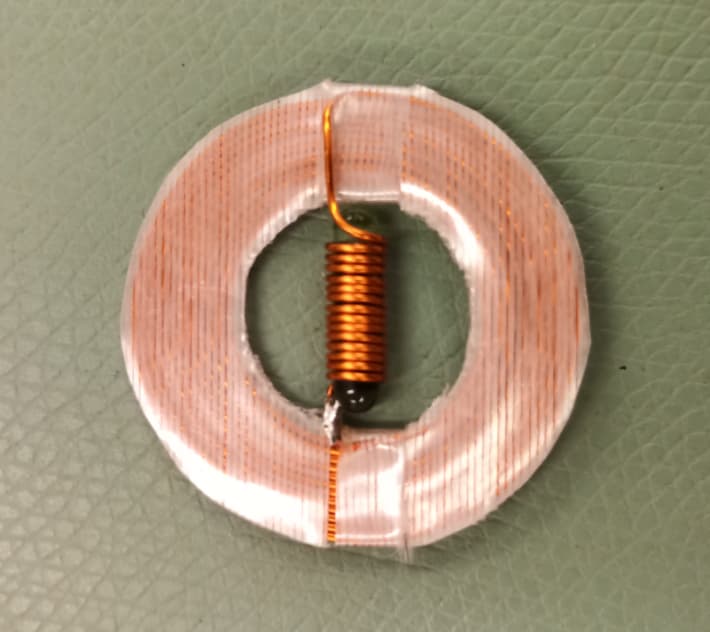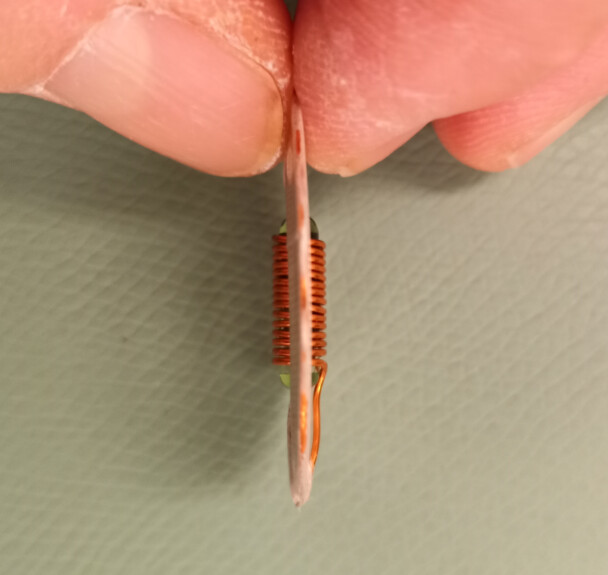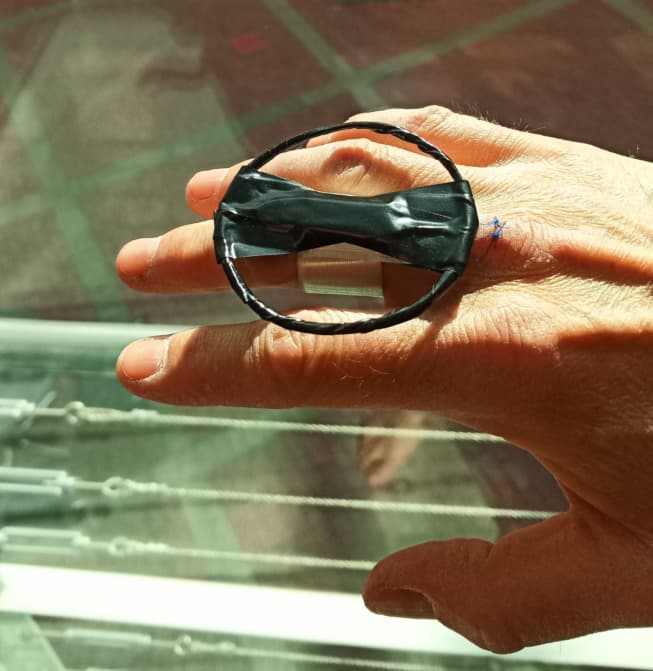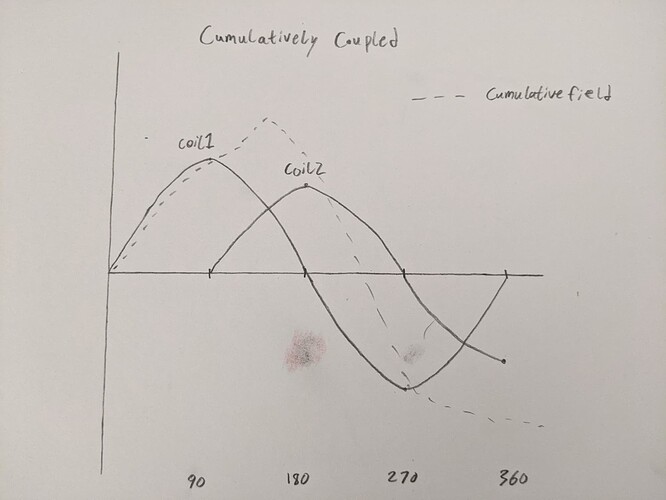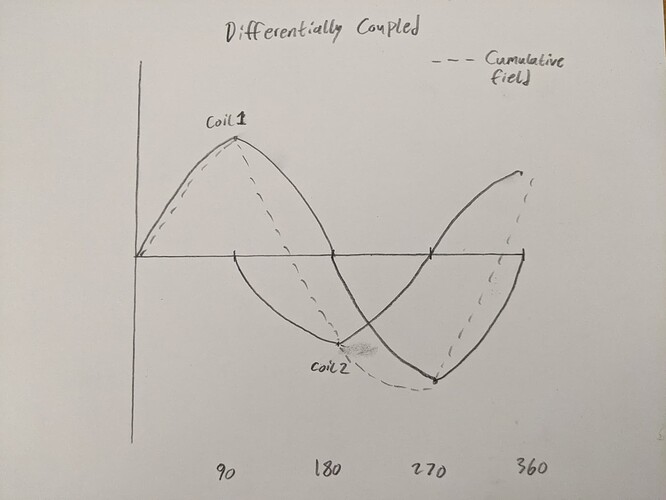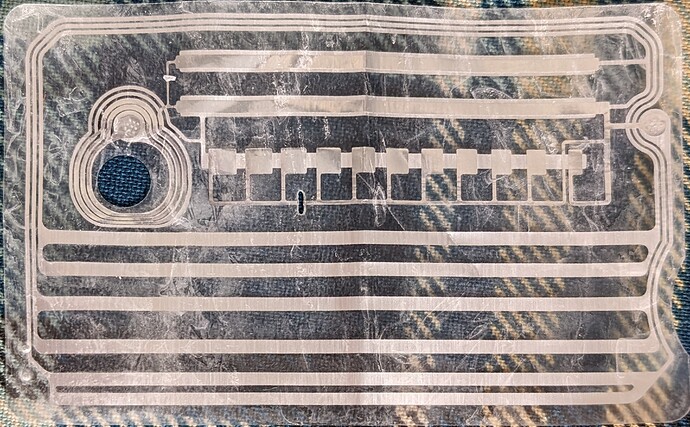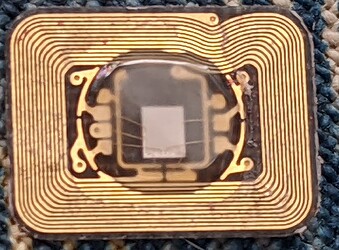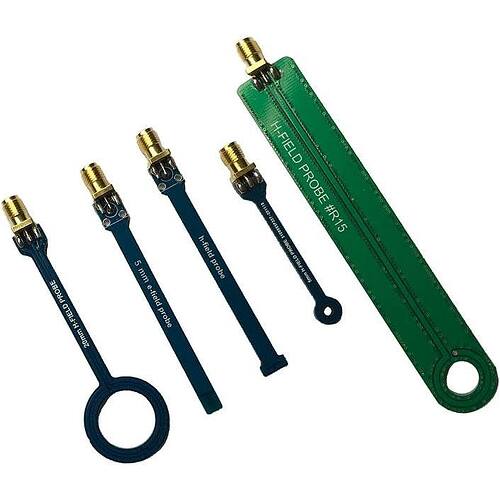I actually made a few of those glassie boosters some time ago, and they work really well:
Yup. Still getting my money situation worked out, but it’s high on my priority list
Nice work! That’s some excellent range. You might even get better results if you measure the inductance and then add an appropriate capacitor. If you have access to an LCR meter or a VNA that would sort it right out.
I might be able to get some extra contribution from them if that’s what you mean?
just making sure, I understand the principles
as cool as this is, (which is super cool btw)
this wouldn’t work for a glass tag, that’s already implanted right?
the booster coil needs to wrap fully around the tags coil to more or less couple the 2 fields?
Correct. This pair of coils is “coupling agnostic”: it’s basically one large planar coil with a smaller 3mm-diameter coil inside, with as many turns of magnet wire with as thick a wire gauge as possible. It itself doesn’t resonate or anything: the glassie inside does.
In short, it’s a transformer.
The two issues are:
-
Yes, you do need to slip the glassie inside the inner coil first, then encapsulate the whole device before implantation. This is not for an existing glassie that’s already implanted, that you want to boost. For that, you can make external repeater coils such as the one I use to boost the range of the payment implant in my finger:
If this ever becomes a product, I envision it to be an option when you purchase an implant that only comes as a glassie: buy the glassie alone with its convenient injector, or buy it mounted into an encapsulated booster and have your installer scalpel you and dermal-elevator you to install it, if you’re not squeamish and you want the performance boost.
-
It’s very stiff because it’s 24 ga copper wire, and it should never flex anyway because the outer coil loops would rub against each other and eventually grind down the enamel and short out. So it’s something to encapsulate into some hard bio-compatible material that doesn’t exist yet. I believe Amal is toying with some sort of resin to create hard implants, but I don’t believe he has gotten anywhere with that yet.
So this is very much experimentation and proof of concept at this point. Although I do have an immediate need to implant one of my glassie boosters with a certain glassie inside, so Amal I formally volunteer to be a guinea pig for the first “hardie” you come up with ![]()
right, I can follow how that works…
so how does the resonant repeater coil work? I kinda want to build one of those
The type I make, yes. You can get fancy and make it out of thinner wire and fewer turns, or PCB traces, in which case its own idiosyncrasies would start to impact the coupling of the glassie inside and you’d have to tune the pair of them for best performances. But if you stick to thick wire, essentially the more you throw at it, the better it works ![]()
One caveat if you want to play with this: pay attention to how the coil transitions from the pickup coil to the radiator coil. In this case, it’s no issue because the pickup coil is planar, and the radiator is a coily coil orthogonal to the plane of the pickup coil.
But for something like the booster for my finger implant, which is in fact one small rectangular planar coil within another, larger one, for some reason they need to be coiled in opposition of one another (i.e. one needs to be coiled clockwise while the other needs to be coiled counterclockwise).
I don’t know why, common sense would dictate that they should work best if both coils turn in the same direction, but apparently the signal cancels out with this particular arrangement of coils for some reason.
In short, there’s a fair amount of black magic involved. But you can quickly come up with something that works surprisingly well without having to iterate through PCB designs for ages.
Hmmm, that’s interesting. If both coplanar coils are wound in the same direction, it’s kind of the same as one larger coil as the inductors are cumulatively coupled in series. If they’re wound opposite directions then they’re differentially coupled. The current lags the voltage in the first coil, and that current induces a new field in the second coil ~90° out of phase of the first. Here’s my hypothesis. Sorry they’re a bit messy
In the cumulatively coupled scenario, the waveform becomes unrecognizable and the peaks shift so it is no longer 13.56MHz. In the differentially coupled scenario like you settled on, the amplitudes get a bit erratic, but the peaks are still in the correct place and it’s still 13.56MHz.
I can’t imagine what the responses look like to the reader ![]() it works though, and that’s all that matters.
it works though, and that’s all that matters.
As a matter of principal I don’t take money from people who aren’t directly participating in the creation of a project. Someone always ends up disappointed and I’d much rather have partners than customers. Like you or Miana could definitely contribute to the order, because I know you’re both interested and are engaged in the project. You can help ideate and design and test things. Your friends probably just want to: give money, get thing. I don’t jive well with that.
I suppose if enough people were interested Amal could contract me to do it for DT. I was just planning to do it myself though and share the design with everybody. Right now I’m financially recovering from the purchase of a CNC Pick and Place machine, but in a few weeks I’ll order some more boards to test out the onboard capacitors.
What are we talking hundreds? Thousands? I wouldn’t mind getting in on a little piece of the smart people action. I have absolutely nothing to offer brain wise but cash wise I can be convinced.
I’m sure you’re plenty smart enough. It’s more about drive. What I’m saying is that I don’t just accept people throwing money at a problem. I prefer to work with grinders not observers.
That makes sense
I think theres an app for that ![]()
I’ve got another friend who’s keen for a CoM conversion (that’s 3 now), you don’t want to take funding from non-grinders but what about pre-orders? If it makes you feel better then you could give the money back if you’re not happy with the end result I guess?
If not we could do a video call sometime and I’ll see if I can help out with the design
We could do a call if you want. I’m on the discord, which would make that easy. I think we’re pretty far off in timezones though. It would probably have to be morning for you, night for me. DM me if you want to arrange something.
I was just waiting until I have a bit more scratch before I do the design. If you really wanted to expedite that process then I guess we could work something out.
I wonder if you could make an adjustable capacitor on the circuit board like Bendigo has done with theirs, by cutting a trace to reduce the length of the capacitor
Here’s a picture of my COM chip, it does look a bit different but hopefully it’ll work?
After we get your VNA sorted, could you post the resonant peak of your CoM module here? If memory serves, mine and the two others I tried in the US were around 18.2MHz
Also, if you still have access to that brand of card unmelted it would be good to have the resonant peak of that too. Sometimes they’re high, like 14.2MHz. Not exactly sure why yet.
No worries, will do. Does it matter what I use as an antenna for the VNA? Do you have any tips?
I responded on discord DM
Sorry I didn’t have time to write out and expand here when I made my last post. Now I do though. First I’ll start with this video for reference.
You mentioned you have a some alligator clips attached to an SMA connector. That gives you lots of options to wind your own antennas. Using a cannibalized credit card coil will work for larger tags, but for smaller implant scale antennas you’re doing to want a smaller reader antenna. The larger the ratio of reader to tag size, the less flux density is actually getting to the tag. What I would do is lay down a piece of tape, then wind a ~2cm diameter antenna with 6-12 turns of wire. You can use enamel coated magnet wire if you want, or even standard insulated hobby wire.
They also sell near field probes for this purpose on eBay and such. I haven’t had as much success with them as my own coils though. Try things out. Also make sure you play around with the SCALE factor to get the trace framed on the screen. The newer NanoVNAs require larger numbers in that prompt.
